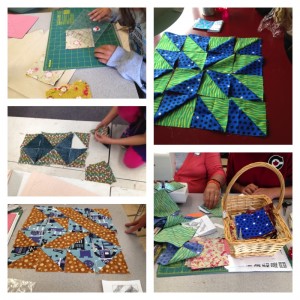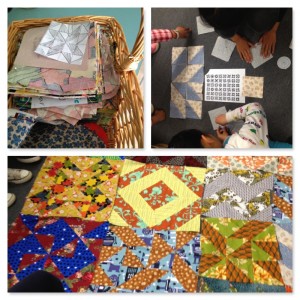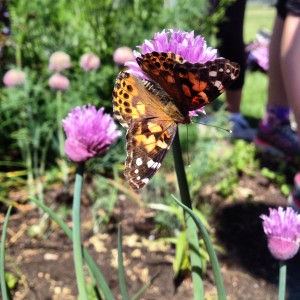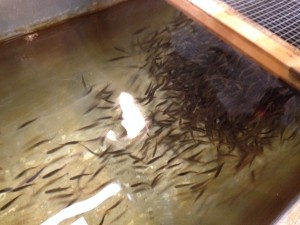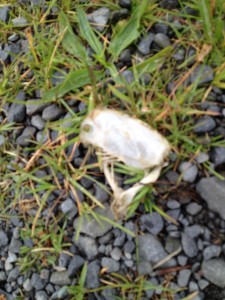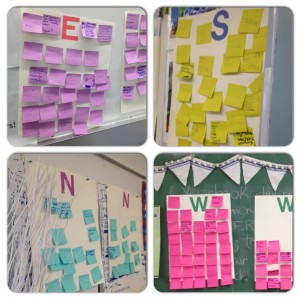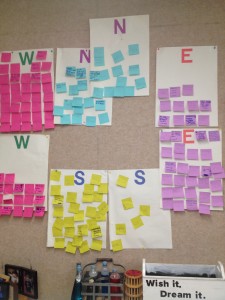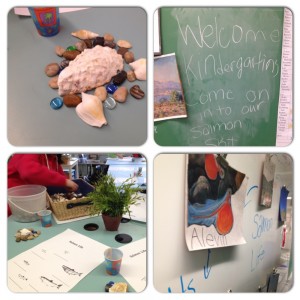“First you have to find out how many squares you have and how big they are.Then you have to make your design, and then we planned it out with paper. We did it once with the fabric and planned it. Then we had to draw it out. Then we started sewing. The sewing was quite fun”
Since May 1st I have been making a quilt with my class. This has been a huge project and an area of growth for my students. A lot of planning was required! On my part and for the students.
The challenges:
– Each student was given their own fabric which I had pre-cut into 12cm X 12cm squares. Because the fabric that was donated came in different quantities each student had a different amount of squares. The range was 12-18. Each student measured their squares and found the area and perimeter each square, and of all of their fabric together.
– Students then had to work together cooperatively to plan and create blocks. We used paper triangles to plan our patterns. Students also had to figure out how many groups of two, three and four their fabric could make in order to plan the size of each block.
-Quilt Blocks were either 2 X 2, 3 X 3, or 4 X 4, in other words – 4 squares, 9 squares or 16 squares!
– Each quilt block or combination of blocks had a variety of intersecting lines, parallel lines and angles within triangles. Protractors, measuring tape and rulers helped us look closer and the complexity within each piece.
-To piece our quilt together we needed to rotate, translate and sometimes reflect the patterns.
The quilt has been an ever-changing complex and authentic math problem for our class. We covered all kinds of math concepts in geometry, numeracy and visuospatial thinking. We have had to change our thinking and evolve with the project, myself included. At first I thought that each student would be able to use up all their squares in the quilt. One of the students in my class collected measurements from each student and calculated that if we used all our squares our quilt would be over 150 feet! We had to change our plan! Shape and space has to be my favourite part of math. This project has been too fun, for me and the students!
Quilting has also been an interesting look into the past for us. Quilting is a huge part of the heritage of our community. Before we began this project we looked at quilt from the online archives of our local museum.
Aside from the math this project has been amazing for social emotional learning. There is a lot of self-regulation required in sewing. We have discussed at length in our class the “zone” you need to be in to quilt. You need to be calm and focused to help use the machine. To do the sewing the students pinned the pieces together. Then either myself or the LST would sit at the sewing machine with the student. We would then work as a team to make the seams. I would use my hands on the machine and the student would use their hands to control the pedal. Pushing on the pedal too hard or too fast would result in uneven and messy seams – so students need to be calm and steady!
We learned about ways to reduce risk and be safe especially when using sharp pins, scissors and the machine. This project has been amazingly community building. I really encouraged the students to try and work with someone new by choosing a partner based on what fabrics go together. For the most part almost everyone worked with someone in the class they don’t usually spend a lot of time with. Social-Emotional Learning can be a puzzle when it comes to assessment. This situation was a lot easier for me- I can look at the quilt coming together and see the cooperation and new friendships.
The students are so proud of this project. We hope to enter our quilt in a local competition.
